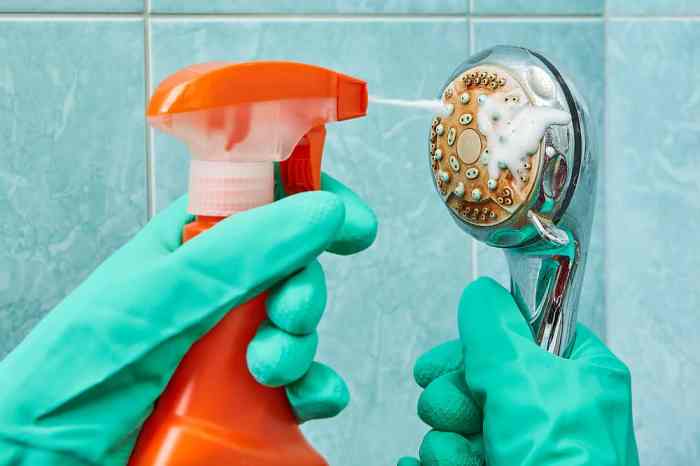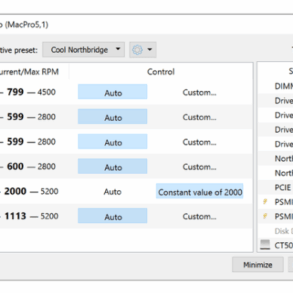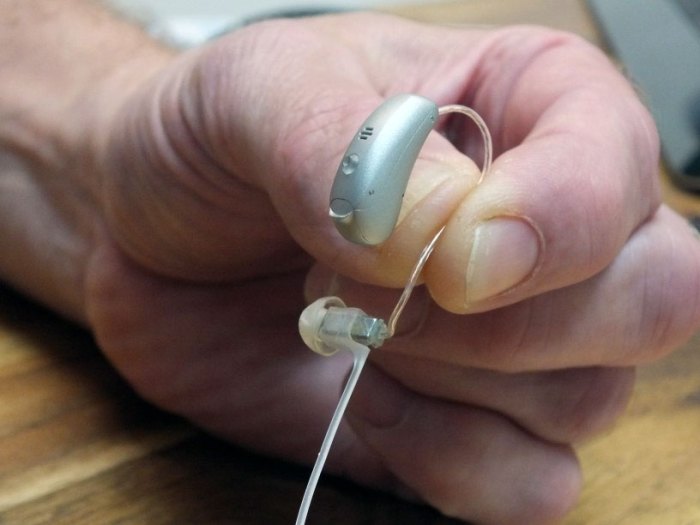Clean your gross showerhead now with this easy trick! A dirty showerhead isn’t just unsightly; it can harbor bacteria, affecting your health and water quality. This post will detail simple yet effective methods to tackle grime, from mineral buildup to soap scum and mold. We’ll cover everything from vinegar and baking soda solutions to advanced techniques and prevention tips.
Discover the surprising truth about showerhead maintenance. Understanding the causes of buildup, like hard water minerals and soap residue, is key to tackling the problem. This guide breaks down the different types of grime and provides a clear comparison of cleaning methods to help you choose the best approach for your showerhead. We’ll also explore how to prevent future issues and maintain a sparkling clean showerhead.
Showerhead Scrubs: A Simple Guide to Sparkling Cleanliness
Your showerhead, a seemingly insignificant part of your bathroom, plays a crucial role in your daily hygiene routine. But what if this essential fixture is harboring unseen bacteria and mineral buildup? Ignoring the cleanliness of your showerhead can lead to a host of health issues and a less than pleasant shower experience. This guide will explore the importance of maintaining a clean showerhead and provide simple, effective methods for achieving sparkling results.
A dirty showerhead can harbor a variety of bacteria, including E. coli and other harmful microorganisms. These contaminants can be aerosolized during showering, potentially leading to respiratory infections or skin irritations. Mineral deposits, such as limescale, can also accumulate, reducing water pressure and potentially clogging the showerhead’s orifices. Regular cleaning is crucial to maintain hygiene and optimal performance.
Effective Cleaning Methods
Maintaining a clean showerhead is surprisingly straightforward. The following methods are both effective and require minimal effort.
- Distilled White Vinegar: White vinegar’s acidity effectively dissolves mineral deposits. Mix equal parts white vinegar and water in a resealable plastic bag. Place the showerhead inside the bag, ensuring it’s completely submerged. Let it soak for at least 30 minutes, or overnight for stubborn buildup. Then, use a soft brush to gently remove any remaining debris.
This method is particularly effective for removing limescale and hard water deposits.
- Baking Soda Paste: Baking soda, a natural abrasive, can help loosen and remove mineral deposits. Create a paste by mixing baking soda with a bit of water. Apply the paste to the showerhead’s surface, using a soft brush or sponge to scrub gently. Rinse thoroughly with water after the paste has been left on for a few minutes.
- Boiling Water: For quick and easy cleaning, fill a pot with water and bring it to a boil. Carefully submerge the showerhead in the boiling water for a few minutes. This method is ideal for quickly removing loose debris and mineral buildup. It’s best for showerheads that are not made of delicate materials, such as plastic.
- Commercial Cleaning Solutions: Many commercial cleaning solutions are specifically formulated to tackle showerhead grime. Follow the instructions on the product label carefully. These solutions can be very effective, but be mindful of any potential harsh chemicals and their impact on your skin.
Tools and Materials
To ensure a successful showerhead cleaning, having the right tools and materials on hand is essential. This will streamline the process and minimize the risk of damage to your showerhead.
- Soft-bristled brush or sponge: A soft-bristled brush or sponge is ideal for gently scrubbing the showerhead without causing scratches or damage. Avoid abrasive materials that could scratch the showerhead’s surface.
- Distilled white vinegar: This effective cleaning agent can help dissolve mineral deposits and limescale buildup.
- Baking soda: Baking soda is a natural abrasive that can help loosen and remove mineral deposits.
- Researchable plastic bag: A resealable plastic bag is helpful for soaking the showerhead, ensuring full immersion in the cleaning solution.
- Gloves: Using gloves is important, especially when using commercial cleaning solutions, to protect your hands from potential irritation.
Preventive Measures
Regular cleaning is key to maintaining a clean showerhead. But preventing buildup in the first place can significantly reduce the frequency of cleaning.
- Regular cleaning schedule: Establish a routine for cleaning your showerhead, such as monthly or bi-monthly, to prevent significant buildup. This will keep your showerhead in top condition.
- Water filter: Consider installing a water filter to reduce the amount of minerals in your water supply. This will minimize the buildup of hard water deposits on your showerhead.
Understanding the Problem

Showerheads, seemingly simple fixtures, are surprisingly prone to accumulating grime. This buildup isn’t just unsightly; it can significantly impact water pressure, quality, and even your health. Understanding the various causes and types of this buildup is crucial for effective cleaning and maintenance.Showerheads, despite their seemingly simple design, are vulnerable to a complex array of contaminations. This accumulation of grime is often more than just a cosmetic concern; it can impact the performance of your shower system and potentially affect your health.
Ever feel like your showerhead is a breeding ground for gross stuff? Luckily, there’s a super easy trick to clean it up! While we’re on the topic of cleaning, did you know there’s a cool Zoom background featuring a futuristic spaceship by Mike Winkelmann (Beeple) that’s decimating coronavirus particles? Check it out here. Anyway, back to the showerhead.
Just soak it in vinegar for a few hours, and watch the grime disappear. It’s a simple solution for a sparkling clean shower!
Common Causes of Showerhead Grime
Understanding the sources of showerhead grime allows for targeted cleaning solutions. Various factors contribute to the buildup of mineral deposits, soap scum, mold, and bacteria. These contaminants, if left unchecked, can lead to a range of problems.
- Hard Water: Hard water, containing high concentrations of minerals like calcium and magnesium, is a primary culprit. These minerals precipitate out of the water as it flows through the showerhead, forming a hard, often chalky, buildup. This process is particularly noticeable in areas with naturally hard water supplies. This mineral buildup can severely restrict water flow over time.
Speaking of cleaning, have you ever looked at your showerhead and thought, “Eww, that’s gross!” Luckily, there’s a super easy trick to make it sparkling clean again. Meanwhile, if you’re in the market for a new phone, check out this awesome deal on an unlocked Google Pixel 3a, currently on sale for $300 at Best Buy! upgrade unlocked google pixel 3a sale 300 best buy It’s a steal, trust me! Once you’ve snagged that new phone, you can tackle that showerhead with confidence, knowing you’ve got a clean and efficient new tech toy.
This easy trick will have your showerhead squeaky clean in no time!
- Soap Residue: Soap residue, often left behind after showering, can also contribute to showerhead grime. The combination of soap and hard water minerals often results in a sticky, white, or yellowish film clinging to the showerhead’s surfaces.
- Moisture: Moisture is a breeding ground for mold and mildew. If water remains stagnant on the showerhead, or if the showerhead is located in a damp environment, mold and mildew can quickly proliferate. These microorganisms can lead to unpleasant odors and potentially health concerns.
- Standing Water: Standing water within the showerhead’s internal components creates an ideal environment for bacterial growth. Regular cleaning can prevent this buildup and mitigate health risks.
How Mineral Buildup Affects Water Pressure and Quality
Mineral buildup significantly impacts water pressure and quality. The accumulated mineral deposits create a layer of resistance within the showerhead’s internal channels, reducing the flow of water. This leads to a decrease in water pressure, making showers less enjoyable and potentially requiring higher water consumption. Additionally, the mineral deposits can affect the taste and odor of the water.
Accumulation of Bacteria and Other Contaminants
The accumulation of bacteria and other contaminants in a showerhead is a serious health concern. If the showerhead is not regularly cleaned, it becomes a breeding ground for bacteria. These microorganisms can contaminate the water that you use, posing risks to your health. Frequent cleaning prevents the accumulation of bacteria and other potentially harmful contaminants.
Types of Showerhead Build-up
Understanding the various types of showerhead buildup helps in selecting the most effective cleaning methods. Different types of buildup require different approaches.
| Type of Build-up | Source |
|---|---|
| Mineral Buildup | Hard Water |
| Soap Scum | Soap Residue |
| Mold & Mildew | Moisture |
| Bacteria | Standing Water |
Simple Cleaning Methods: Clean Your Gross Showerhead Now With This Easy Trick
A clean showerhead is crucial for healthy skin and a hygienic showering experience. Mineral buildup, soap scum, and other debris can accumulate quickly, impacting water pressure and potentially leading to clogs. Effective cleaning methods can restore optimal performance and prevent future issues.The following sections detail effective and safe techniques for cleaning your showerhead, focusing on both vinegar and baking soda solutions.
These methods are proven effective and readily available in most households.
Vinegar Cleaning Procedure
Vinegar’s acidity is a powerful tool for dissolving mineral deposits. This method is generally safe and effective for most showerheads. Follow these steps for a sparkling clean showerhead:
- Fill a resealable plastic bag with white distilled vinegar, ensuring the showerhead is completely submerged.
- Seal the bag tightly around the showerhead to create a concentrated vinegar bath. Allow it to soak for at least 4 hours, or preferably overnight. This prolonged soaking time allows the vinegar to effectively break down mineral deposits.
- After the soaking period, carefully remove the showerhead from the bag. Use a soft-bristled brush or sponge to gently scrub away any remaining buildup. Avoid using abrasive cleaners, which could damage the showerhead’s finish.
- Rinse the showerhead thoroughly under running water to remove all traces of vinegar. This step is essential to prevent any lingering vinegar smell or residue.
- Inspect the showerhead for any remaining buildup. Repeat the soaking and scrubbing process if needed.
Baking Soda Cleaning Procedure
Baking soda is a mild abrasive that can effectively remove hard water deposits and soap scum. This method is also safe and effective, but may require a bit more elbow grease.
- Create a paste by mixing baking soda with a small amount of water. The consistency should be thick enough to stick to the showerhead.
- Apply the baking soda paste to all surfaces of the showerhead, focusing on areas with noticeable buildup.
- Using a soft-bristled brush or sponge, gently scrub the paste over the showerhead’s surface. Be cautious not to use excessive force, which could scratch the finish.
- Rinse the showerhead thoroughly under running water to remove all traces of baking soda. Pay particular attention to crevices and hard-to-reach areas.
- Inspect the showerhead for any remaining buildup. Repeat the process if necessary.
Comparison of Vinegar and Baking Soda Methods
| Method | Steps | Pros | Cons |
|---|---|---|---|
| Vinegar | Soak in vinegar solution, scrub, rinse. | Effective at dissolving mineral deposits, generally safe, often less abrasive. | Can take longer to work, might have a vinegar smell if not rinsed thoroughly. |
| Baking Soda | Create paste, apply, scrub, rinse. | Effective at removing buildup, readily available, mild abrasive. | May require more scrubbing, can be less effective on heavily mineralized deposits. |
Lemon Juice Cleaning Solution
A natural cleaning solution using lemon juice can be an effective alternative. Lemon juice’s acidity can help dissolve mineral deposits and leave a fresh scent. Mix equal parts lemon juice and water. Soak the showerhead in this solution for at least 2 hours. Scrub gently and rinse thoroughly.
Advantages and Disadvantages of Each Method
Each method has its own set of advantages and disadvantages. Vinegar is effective at dissolving hard water deposits but might have a lingering smell if not rinsed thoroughly. Baking soda is readily available and mild but may require more scrubbing for stubborn buildup. Lemon juice offers a natural alternative, but might not be as effective for heavily calcified deposits.
The best method will depend on the specific level of buildup and your personal preferences.
Advanced Cleaning Techniques

Sometimes, even the best scrubbing isn’t enough to remove stubborn mineral deposits or completely clear out clogs. This section delves into more advanced methods for tackling tough showerhead grime, ensuring your showerhead is sparkling clean and efficiently delivers water.Advanced techniques are often necessary when basic cleaning methods fail to address the issue. Understanding these methods will empower you to effectively maintain your showerhead and prevent future buildup.
Using a Toothbrush for Stubborn Clogs
A toothbrush, surprisingly, can be a powerful tool for dislodging stubborn clogs in a showerhead. Its small size and flexible bristles allow it to reach into tight spaces and effectively remove blockages. Gently work the bristles into the openings, using a back-and-forth motion. For particularly tough clogs, consider using a toothbrush with a stiff-bristled head, but be careful not to scratch the showerhead’s surface.
Cleaning a Showerhead with a Wire Brush
A wire brush can be exceptionally helpful for removing hard water deposits and mineral buildup from the showerhead’s internal components. Carefully scrub the surface, focusing on areas where water is pooling or deposits are accumulating. However, use caution when using a wire brush, as it can scratch the surface of the showerhead if not used gently. Be especially mindful of delicate or painted surfaces.
Utilizing Specialized Showerhead Cleaners
Specialized showerhead cleaners are specifically formulated to dissolve mineral deposits and remove grime. These cleaners are often more effective than basic cleaning agents, especially for persistent buildup. Always follow the product instructions carefully for optimal results. These cleaners are available in various forms, such as sprays, gels, and pastes, each with its own application method.
Ever feel like your showerhead is more of a microbial breeding ground than a refreshing experience? Well, you’re not alone! Cleaning that gross thing is easier than you think. Plus, if you’re curious about the ethics of recording strangers in public, check out this fascinating article on why people push that button: whyd you push that button record stranger public.
Once you’ve got a better understanding of the tech and human element behind that question, you can tackle that showerhead with renewed vigor and confidence. So, grab your vinegar and baking soda, and let’s get this show on the road!
Proper Rinsing After Cleaning
Thorough rinsing is crucial after any cleaning method. This step removes any remaining cleaning agents, mineral residue, or debris, ensuring the showerhead functions optimally and preventing future buildup. A thorough rinse helps to restore the water flow to its original efficiency. A high-pressure water spray can be helpful to ensure complete removal of all cleaning agents and debris.
Comparing Cleaning Tools
| Tool | Description | Pros | Cons |
|---|---|---|---|
| Toothbrush | Small, flexible bristles for reaching tight spaces. | Effective for dislodging clogs, affordable. | Can be less effective for heavy buildup, may scratch delicate surfaces. |
| Wire Brush | Stiff bristles for removing hard water deposits. | Excellent for heavy buildup, cost-effective. | Can scratch the showerhead surface if not used carefully, may damage delicate components. |
| Specialized Cleaner | Formulated to dissolve mineral deposits. | Highly effective for stubborn buildup, often faster than manual methods. | Can be more expensive, requires careful following of instructions. |
Prevention and Maintenance
Keeping your showerhead sparkling clean isn’t just about a quick scrub; it’s about a long-term strategy for maintaining a healthy and efficient shower experience. Regular cleaning prevents mineral buildup, ensuring optimal water pressure and flow, and also minimizes the risk of clogs and other issues down the line. Proactive maintenance is key to enjoying a clean, functional shower for years to come.Preventing future buildup is far easier and less time-consuming than battling a showerhead coated in hard water deposits.
Understanding the common causes of this build-up and implementing preventative measures can dramatically extend the lifespan of your showerhead and keep your bathroom looking its best.
Importance of Regular Cleaning, Clean your gross showerhead now with this easy trick
Regular showerhead cleaning is crucial for maintaining water pressure and preventing clogs. Mineral deposits and other debris can accumulate over time, reducing water flow and potentially leading to a showerhead that takes longer to heat the water. This can increase energy consumption and impact your overall water bill. Regular cleaning also helps prevent the growth of mold and mildew, keeping your bathroom environment hygienic.
Preventing Future Build-Up
Several strategies can help prevent future showerhead build-up. Softened water systems, while beneficial for other plumbing issues, can actually contribute to build-up if not properly maintained. Regularly flushing your plumbing lines, especially in hard water areas, is crucial for preventing this issue. Furthermore, installing a water filter can remove minerals from the water before they reach your showerhead, drastically reducing the build-up.
Maintaining a Clean Showerhead
A proactive approach to showerhead maintenance is key to long-term cleanliness. A simple monthly cleaning, including the steps Artikeld in the previous sections, can significantly reduce the need for more intensive cleanings. This can also extend the lifespan of your showerhead. For example, a simple monthly descaling with vinegar or a commercial cleaner can prevent mineral build-up and keep your showerhead in top condition.
Selecting Easier-to-Clean Showerheads
Choosing a showerhead with a design that minimizes build-up can simplify your cleaning routine. Showerheads with wider spray patterns or those featuring removable components are easier to clean than those with intricate internal structures. Consider showerheads with a removable filter or a more straightforward design when making a purchase.
Long-Term Cleaning Schedules
Establishing a consistent cleaning schedule is vital for maintaining a clean showerhead. A monthly cleaning using a solution of vinegar and water is often sufficient for most households. A bi-monthly cleaning with a commercial showerhead cleaner is an alternative for those experiencing particularly hard water. For high-use bathrooms, consider a quarterly deep clean to ensure maximum hygiene and efficiency.
| Frequency | Method | Description |
|---|---|---|
| Monthly | Vinegar soak | Soak the showerhead in a solution of white vinegar to remove mineral deposits. |
| Bi-monthly | Commercial cleaner | Use a commercial showerhead cleaner according to product instructions. |
| Quarterly | Deep clean | Disassemble and thoroughly clean all parts of the showerhead, including the filter if applicable. |
Visual Aids
Seeing is believing, especially when it comes to tackling showerhead grime. Visual aids can transform abstract concepts into tangible realities, helping you understand the extent of the problem and the effectiveness of the solutions. This section will provide detailed descriptions of various showerhead scenarios, from severely clogged to sparkling clean, to guide you through the cleaning process.Visual aids are critical for understanding the cleaning process.
They provide a clear picture of the problem, the solutions, and the results. This will help you visualize the process and understand the various steps involved, leading to a successful and efficient cleaning experience.
Showerhead with Significant Build-Up
Imagine a showerhead that has been neglected for months, or even years. Mineral deposits, hard water stains, and soap scum have accumulated, creating a thick, crusty layer coating the spray nozzles. The water flow might be noticeably reduced, and the showerhead itself may appear dull and discolored, possibly with a noticeable build-up of limescale. The color could vary from a chalky white to a yellowish or brownish hue, depending on the water’s mineral content.
The build-up could be concentrated in certain areas, like around the spray holes or along the showerhead’s body.
Clean Showerhead
A clean showerhead is a vibrant, clear, and unobstructed showerhead. The water flows freely and evenly, and the showerhead’s spray pattern is consistent. All visible surfaces, including the spray nozzles, are smooth, free from discoloration, and have a glossy appearance. The showerhead should appear new and fresh, without any signs of mineral buildup or hard water stains.
Clean vs. Dirty Showerhead Comparison
A visual comparison is invaluable. Imagine two side-by-side images: one showcasing a clean showerhead with a clear, consistent spray pattern and a bright, shiny finish; the other depicts a dirty showerhead, encrusted with mineral deposits and hard water stains. The difference in water flow and the appearance of the showerhead should be striking, highlighting the dramatic impact of cleaning.
This visual representation emphasizes the necessity of regular maintenance and cleaning to maintain optimal performance.
| Clean Showerhead | Dirty Showerhead |
|---|---|
| Clear, consistent spray pattern | Weak, inconsistent spray pattern |
| Bright, shiny finish | Dull, discolored, or encrusted finish |
| Free-flowing water | Reduced water flow |
Step-by-Step Visual Guide for Cleaning with Vinegar
A step-by-step visual guide will make the process simple and easy to follow. Imagine a series of images showcasing each step in the vinegar cleaning process: first, a picture of the dirty showerhead; then, a picture of the showerhead submerged in a vinegar solution; then, a picture of the showerhead being carefully rinsed; and finally, a picture of the clean, sparkling showerhead.
Each step should be clearly labeled for clarity.
Visual Representation of Different Types of Showerhead Build-Up
Different types of water hardness and mineral content can lead to varying types of build-up. A visual representation could include several images or diagrams showcasing the different types of build-up. For example, one image could show a showerhead with hard water stains, another with limescale deposits, and another with soap scum. The differences in the appearance of these build-ups should be clearly highlighted to aid in recognizing the various forms of mineral deposits.
The different build-ups could be represented as a graphic with corresponding labels, explaining the characteristics of each type.
Ending Remarks
So, there you have it – the ultimate guide to a sparkling clean showerhead! By understanding the causes of grime and employing the right cleaning methods, you can drastically improve your water quality and create a healthier bathing experience. Remember, regular maintenance is key to keeping your showerhead pristine and your health safe. From vinegar soaks to specialized cleaners, you’ve got the tools to tackle any buildup.
Now go forth and enjoy a refreshing shower!











